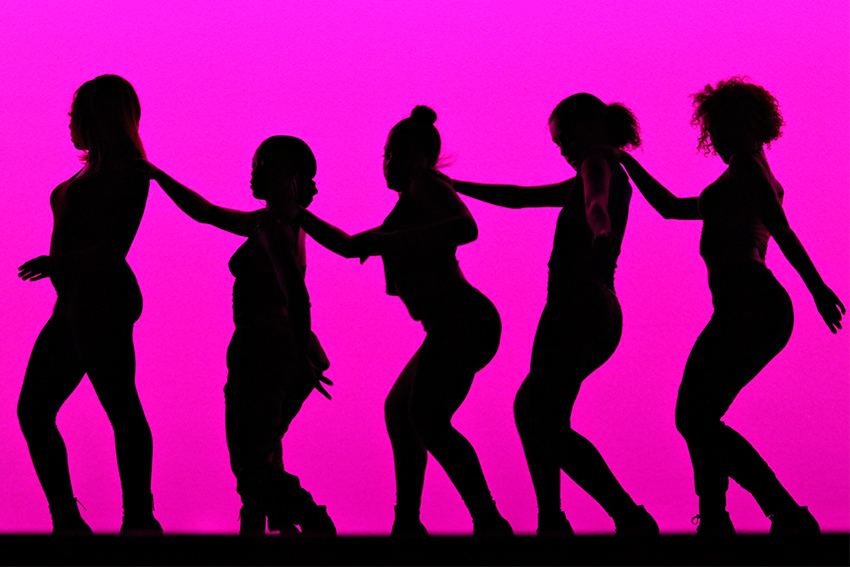Many people can twirl en pointe or do pirouettes, but Jordyn Marsh is one of the few who can do them in stilettos.
The dance senior leads a group called Black Fine Artist, BFA, which performs its choreography to hip-hop music. She said she particularly enjoys displaying her acrobatic moves for UT’s black community.
“We enjoy our culture (and) doing what we do,” Marsh said. “In my dance, they pull from the aesthetic of cool … you’re working hard, but you don’t show it in your face.”
Moving in heels to the rhythm of artists such as Rihanna, Beyonce and SZA, Marsh is the architect of most of BFA’s routines. Over a week ago, BFA performed in “Culture Shock: A Showcase of Black Talent” at Hogg Auditorium.
Public relations junior Giovanni Gutierrez attended BFA’s performance and said he was stunned.
“They really showed their creativity and their talent,” Gutierrez said.
Marsh said dancing in heels is intended for general entertainment, but there is a stronger sense of comfort when her group performs in front of a predominately black audience.
“(We’re) more comfortable doing it in the black community because I think one of the aspects of being African-American is that we accept sensuality, but also know that it doesn’t define who we are,” Marsh said. “We’re women with curves, and it’s totally fine to be like, ‘Hey, look at me, but don’t touch me.’”
For Marsh, dance is more than a display of vigorous athleticism — it’s a form of self-expression.
“One of the reasons why I love dance is you can be whoever you want to be,” Marsh said. “I’m just tragic at all other art forms, so if I tried to express myself through them, the message would not be perceived.”
Hip-hop music is also integral to the group’s art, Marsh said. She added that the genre plays an important historical role, not only in dance but also in black culture.
“The background in which hip-hop was created was in an apartment,” Marsh said. “Just a couple of black people hanging out because, at the time, it was all disco music.”
In 1973, at an apartment in West Bronx, New York City, Jamaican immigrant Clive Campbell was celebrating and spinning records for his sister’s birthday. He noticed the crowd would anticipate sections of the record, waiting to bust a move. He would switch between turntables to give them more opportunities by extending the drum breaks.
This technique, music historians say, gave birth to hip-hop. Campbell would later become known as DJ Kool Herc for sharing his innovation.
“(Historically), hip-hop was made for black people and to express black voices,” Marsh said. “Obviously, it’s transitioned, and it’s become so large that it’s opened up to multiple voices, like Eminem.”
Marsh said if people wish to grow more familiar with black culture, they should go beyond watching dance groups like hers and attending hip-hop concerts.
“The best way, honestly, to get involved in black culture is, for one, just talk to black people,” Marsh said. From classmates to co-workers, Marsh said there is always an opportunity for interaction.
“We all love our culture and want to share it with the world,” Marsh said. “Half the time, our culture is already embedded within it.”















